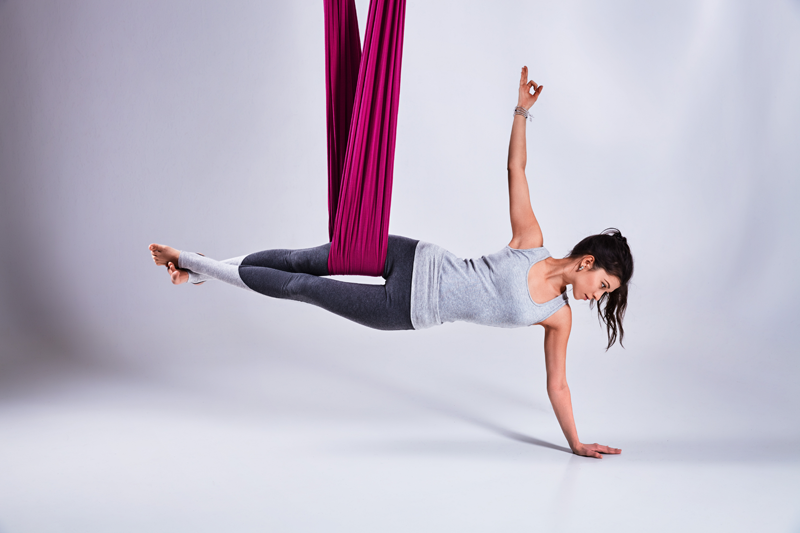Did you know that gravity can affect your yoga practice? While you can’t blame the force for falling in love, it does play a role in the discomfort you experience in a yoga session. If you’ve never heard about this before, you’re in the right place. From weightlifting at the gym to slumping down on your sofa at the end of the day, everything is governed by gravitational force – yoga included. Learning how gravity affects you on the yoga mat is important for you to reap the maximum benefits. Thankfully, we’re here to help. In this article, we explore how gravity affects your yoga practice more than you realise.
Muscle Contraction
When you move, your muscle undergoes two types of contraction – Concentric Contraction and Eccentric Contraction. Eccentric contraction is the elongation of a certain muscle in the process of a force or strain. The result of this is notable deceleration of the body part. Concentric contraction is a process that happens in a positive environment and results in the acceleration of the body part. Whenever a muscle contracts, the nervous system sends a signal to myosin – one of the protein filaments in your muscle. With this in mind, it’s important to identify the level of force exerted during an asana compared with the resistance forwards the force.
Muscle Proteins
Not only does yoga strengthen your muscles, but it also tests them. For instance, during Plank Pose, the muscles involved in the posture successfully perform Eccentric contractions. This means that the force exerted on your arms when holding the asana is greater than simple poses that just involve raising your leg. While holding Plank Pose builds strength in the triceps, you should be aware of the fact that overdoing asanas involving eccentric moves could lead to significant loss of muscle proteins. This has the potential to result in painful muscle soreness known as DOMS or Delayed Onset Muscle Soreness. This can have a lasting effect if you don’t practice yoga on alternate days.
Centre of Gravity
During any yoga pose, your centre of gravity governs the move. The first person to discover the significance of this in daily life was Leonardo Da Vinci, who went on to name it Propulsive Force. Later, Thomas Graham Brown gave the theory a new dimension when he stated that the centre of gravity moves forwards and downwards under the force of Gravity as we move. So, how does this affect your yoga practice? For starters, consider Tree Pose, your pelvis is shifted towards the left as you stand strong with your hands together. While the shift in your pelvis isn’t a forceful movement, it’s demanding to balance your centre of gravity. If you don’t make this shift and try to balance yourself on a straight body, the muscles in your spine and legs will feel the power of the gravitational force.
Inversions and Blood Flow
Many people blindly follow information linked to inversions and blood flow. For decades, people have believed that poses like handstands or headstands increase blood flow towards the brain and supply the area with fresh, oxygenated blood. While it’s true that gravity affects inversions, you cannot supply the brain with a bucket of fresh blood by balancing upside down. There is a well-devised system surrounding the brain that regulates the level of blood reaching the area to decrease the risk of artery damage.
However, inversions like Shoulder Stand or Legs Up the Wall do let you defy gravity and do have some benefits for your skin. Other functions, such as the circulatory system, also benefit from inversions and their actions against the force. In day to day life, gravity exerts a pull on your muscles, spine and, skin. This is the main reason that your skin sags over time. With this in mind, poses that go against the force can benefit your health in profound ways and keep you looking younger for longer. Just be sure not to overdo it!
Aerial Yoga
If you’re interested in the effect of gravity on your yoga practice, you’ll probably be interested in Aerial Yoga. Aerial Yoga or Fly Yoga is a relatively new phenomenon. The practice uses a hammock to combine traditional asanas with dance and Pilates. Built to support up to 300 kilos of weight, the hammock allows yogis of all ages, sizes and weights to partake in the practice. The sturdy equipment is supported by industrial carabiners, support chains, and a webbing strap, while the hammock itself is crafted from quality silk for a comfortable experience. The support chains hang from the ceiling to the floor, so yogis can clip the hammock at their preferred height using the carabiners. As the hammock supports the entire body, Aerial Yoga is popular amongst those with back problems, hip pain, and weaker joints. So, what does Aerial Yoga have to do with gravity? Well, the practice is a counter gravity yoga form that allows the muscles to relax and your joints to have more space between them. This helps to avoid uncalled friction during the session. If you’re not sure what Aerial Yoga is, have a look online – you’ll find some amazing images of yogis suspended in mid-air.
In Summary
So, there you have it – how gravity affects your yoga practice more than you realise. Essentially, the force can have both good and bad effects on the body. Taking these into consideration will help you reap maximum benefit from your yoga practice. Inversions and anti-gravity styles such as Aerial Yoga use gravity to their advantage. Practising these regularly can positively influence the circulatory system, joints, and your facial skin. To stay looking young and healthy as you age, put on your yoga bra and practice inversions regularly. You won’t regret it!

